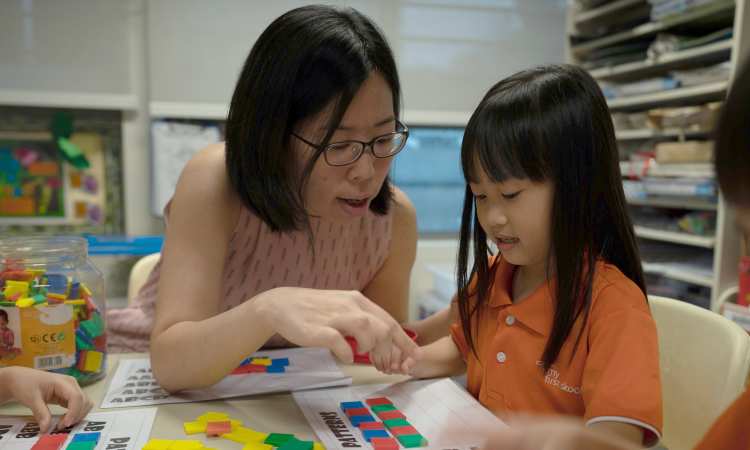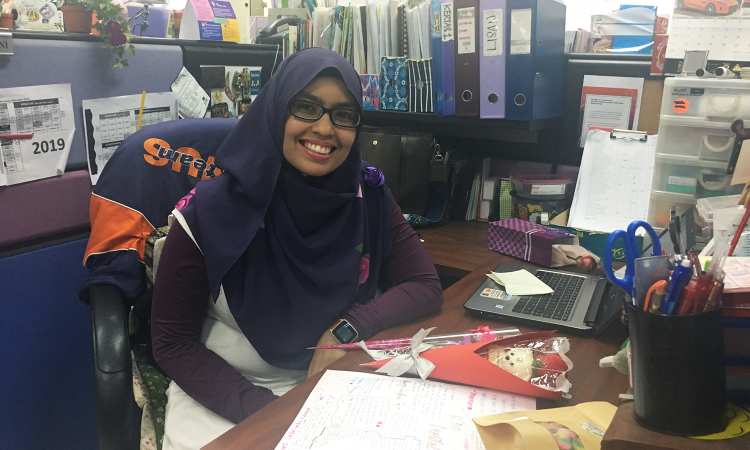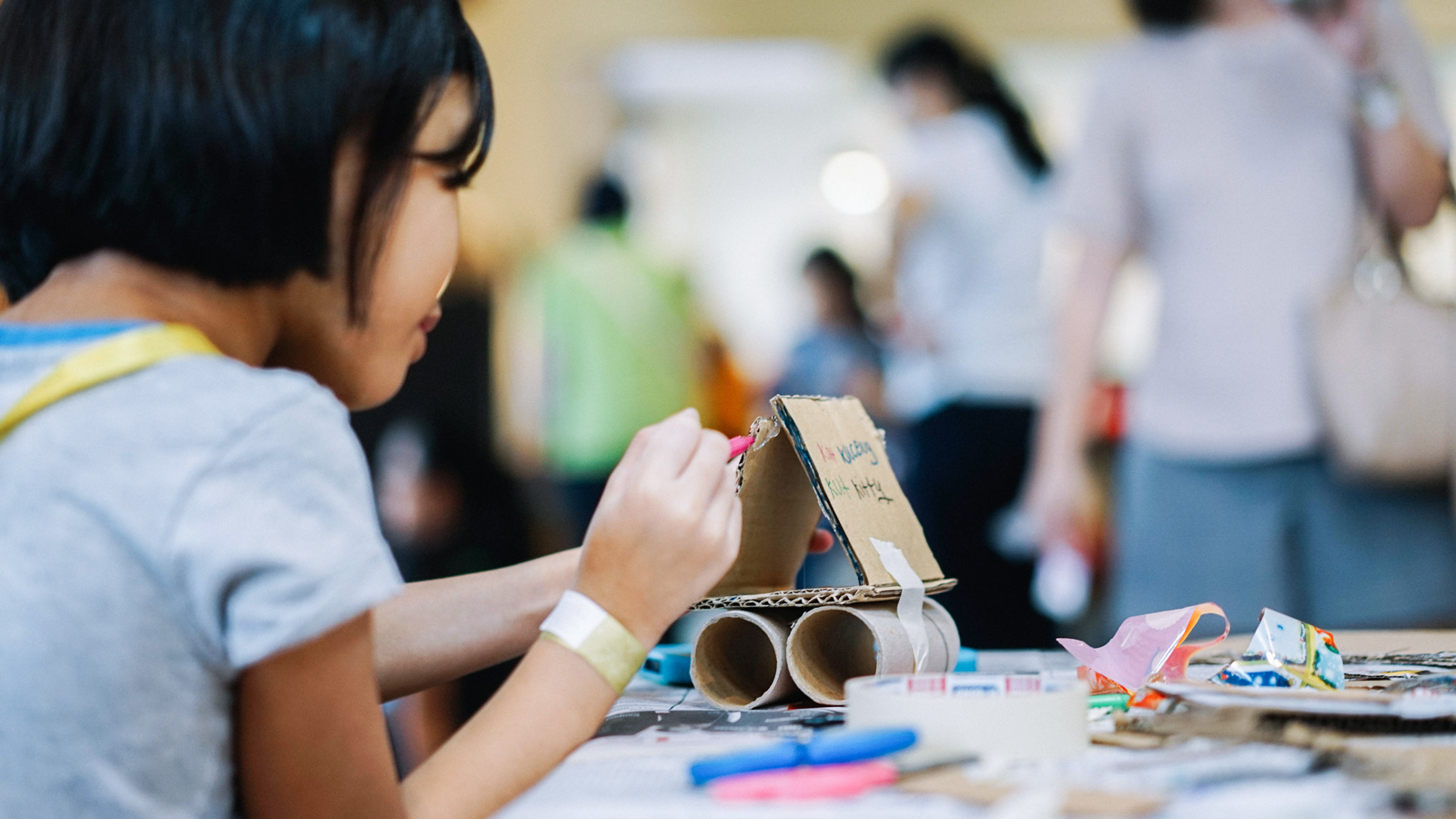Since 2012, Gillman Barracks has been home to several contemporary art galleries and organisations. It seems fitting then that a centre promoting free-spirited artful play and creativity for children would be found here, amid the lush greenery and spacious interiors of the former military barracks. Now into its fifth year, Playeum has been a field-trip-destination-with-a-difference for education institutions from pre-schools, primary schools and schools catering to those with special needs.
“Students are speechless when I tell them that they are going to a place where they are supposed to play, and do nothing but play,” chuckled Suhana, a teacher from a neighbourhood primary school in the west of Singapore. The student group that she had been taking to Playeum is a mix of Primary 1 and 2 children from marginalised families and are beneficiaries of MOE or school-based financial assistance schemes. They were participating in Playeum’s High-Touch Programme, one of its funded social outreach programmes for children deemed to be ‘at risk’. To date, one batch from her school has completed the programme and she had been working with the next batch of students when Covid-19 hit.
Since schools closed, Playeum has paused its outreach programmes. And with the enhanced circuit breaker measures in place, it has moved all its activities online. Children can catch the weekly Live series on Instagram every Friday at 3pm where Playmakers will guide children through activities using everyday household items. Parents and caregivers can join in the Kampong Konversations for some virtual company and meaningful sharing on Thursdays at 3pm.
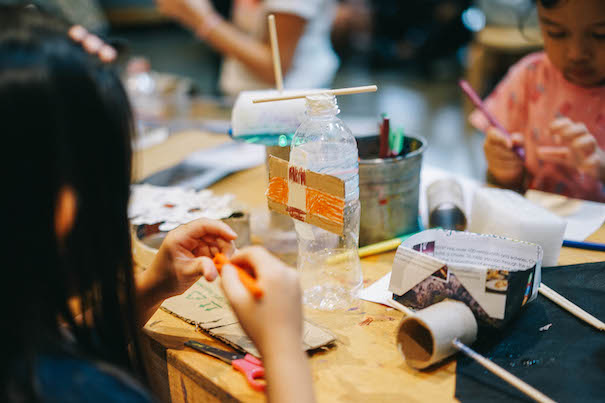
Playeum’s High-Touch Programme is structured over 6 inter-disciplinary and STEAM-(science, technology, engineering, the arts and mathematics) based sessions. These students delve into topics that they otherwise would not have had a chance to during school curriculum time, or even after school, as many of them are latchkey kids. The sessions, when they were still being conducted, had proven to be so fun, students were eager to go back for more.
So Suhana and her colleagues had been able to use the Playeum sessions as a motivational tool to encourage the students to do better at school – either by striving to work harder in their studies, be punctual, or simply to turn up, as truancy is a problem. “Usually for these children, they don’t see the authenticity of what they are learning at school in their lives,” Suhana explained.
But after the children started the programme at Playeum, she said that she saw a marked improvement in their class time behaviour and punctuality. In addition, she was able to take back surprising observations of the children’s learning behaviour at Playeum to her colleagues, which helped them to adjust their teaching methods. “It got me to reflect on how kids learn…[Before this experience] we didn’t know this child or that child could learn so much, or was actually very vocal,” Suhana said.
Now that the first batch has graduated from the almost 3-month long programme, the issue is how to make the ‘Playeum effect’ continue after the circuit-breaker hiatus, and the school is looking into getting funding for an on-site maker’s space, and having a group of teachers trained by Playeum to facilitate it.
Facilitating play as a learning experience
What then does Playeum do differently from after-school enrichment programmes? Aside from the aesthetic and sensory themed play-worlds that are created with each yearlong exhibition, “the key value-add is our approach and pedagogy, and how it is adopted in the way the Playmakers are trained to facilitate play,” Charlotte Goh, the Executive Director shared. The open-ended nature of playtime at Playeum is what gets the children excited about articulating their choices and having a voice of their own. There is a fine balance in having enough Playmakers to guide the children and yet not too many, which would restrict them.
Even trained MOE teachers found it a new experience as well. When schools made field trips to Playeum, it was a struggle for the teachers to let their charges roam freely and choose how they wanted to play because it was a new way of how school was conducted.
Sometimes, explained Goh, teachers come with a plan of splitting their charges into two groups and allotting a fixed time for each station before mandating a swap, only to be surprised that that is not how Playeum encourages play.
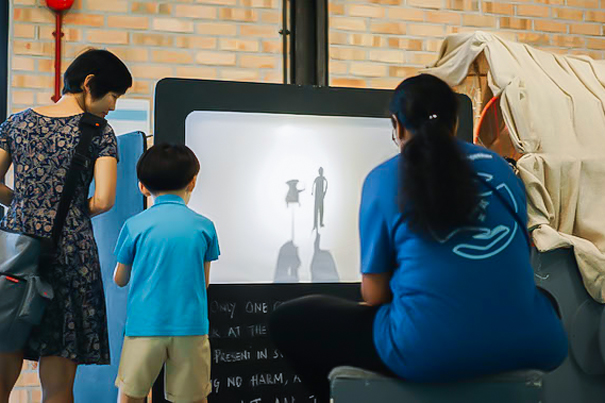
The High-Touch programme isn’t the only way Playeum walks the talk of making play possible for every child. When Playeum re-opens its physical campus, it will continue with outreach programmes like Giving Tuesdays, which is a weekly play-based programme where children with varying disabilities can come and play for free. To make the space socially inclusive, all other children are welcome to play as well during this time. Giving Tuesdays is part of a NCSS-supported research initiative on the impact of play in the lives of children with disabilities.
Dr Esther Joosa, Playeum’s director of pedagogy, reports that “children who participate in the programme have shown greater flexibility and adaptability, improved self-regulation and increased levels of speech and communication.”
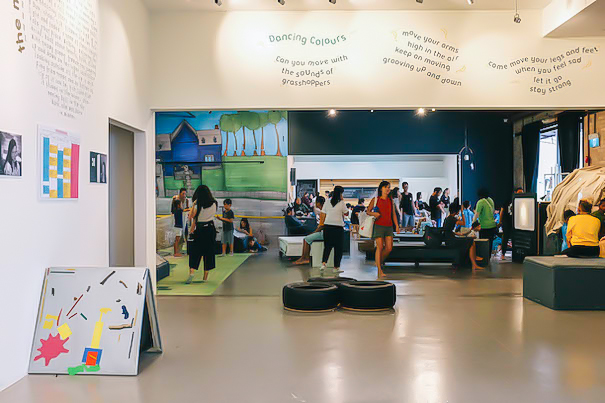
Moving forward, Playeum’s plans for the future is to reach out to the wider community. “Imagine if Playeum could have multiple platforms just like there are library branches and community centres serving each neighbourhood,” Goh said. When the circuit breaker restrictions are over, Playeum will continue to explore various possibilities including having pop-up maker carts in community hubs to make its brand of play more accessible.
Due to Covid-19 and circuit breaker measures, the Centre at Gillman Barracks is closed temporarily. However, Playeum hopes to continue to create an online space that serves as a source of retreat and support for both children and adults.
How You Can Help
Playeum is a mission-based, non-profit venture and an IPC charity. You can find out how to help by visiting https://www.playeum.com/donate-volunteer
If you like what you read, follow us on Twitter and Telegram to get the latest updates.
Other stories you might like
